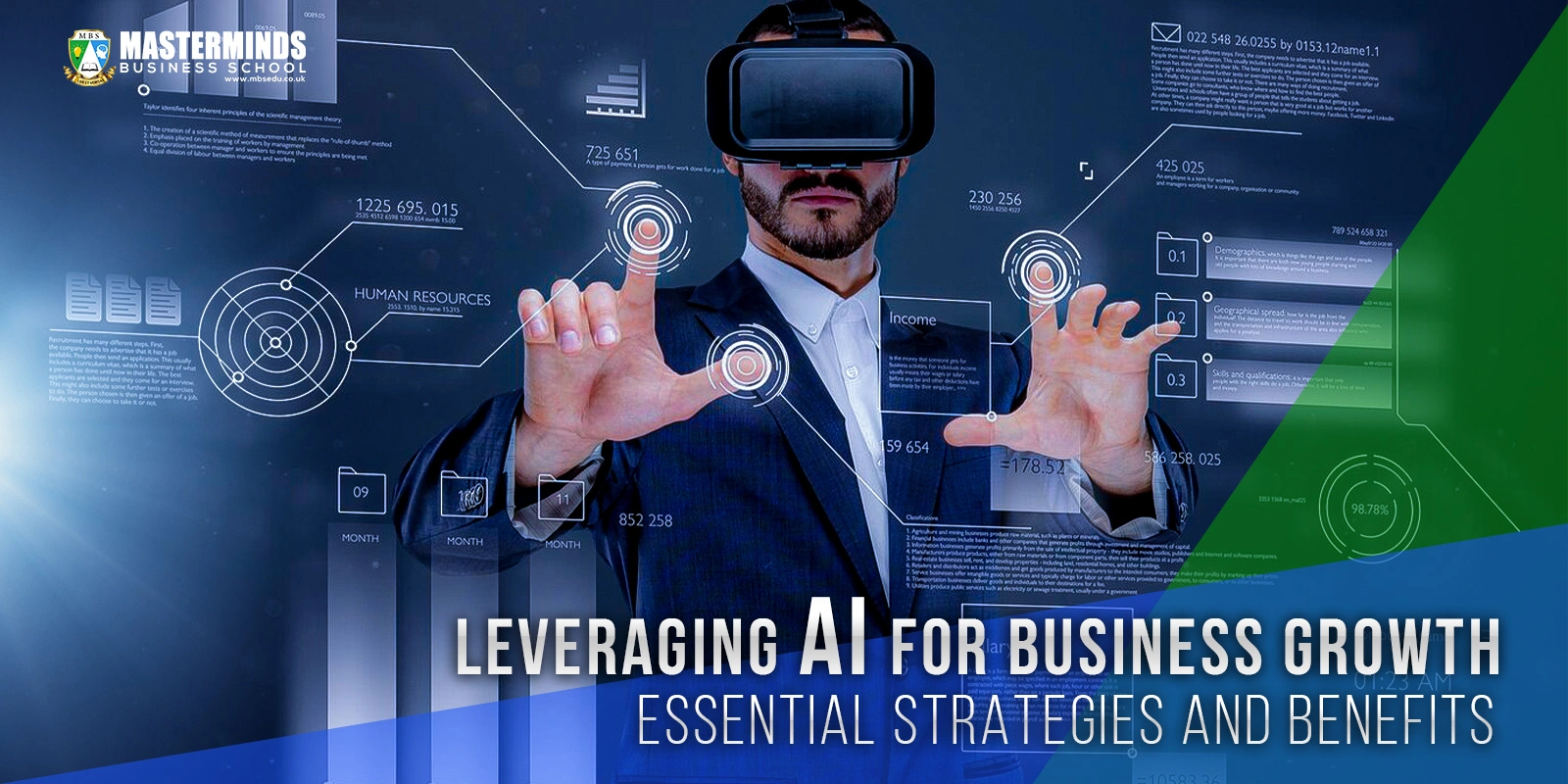Leveraging AI for Business Growth: Essential Strategies and Benefits

In today’s fast-paced, technology-driven world, Artificial Intelligence (AI) has become an essential tool for businesses across industries. AI offers immense potential to enhance business growth by optimizing operations, improving customer experiences, and enabling data-driven decision-making. From startups to multinational corporations, leveraging AI effectively can lead to substantial improvements in efficiency, profitability, and competitiveness. This article explores how AI can be harnessed for business growth, the key applications of AI across industries, and practical strategies to integrate AI into your business. Leveraging AI for Business Growth. Understanding the Power of AI in Business AI, with its advanced computational abilities, can process massive amounts of data, identify patterns, and generate insights that human analysis alone could not achieve. Through machine learning, natural language processing, and predictive analytics, AI transforms how businesses operate and make decisions. The automation and optimization powered by AI reduce manual tasks, free up resources, and enable companies to focus on strategic initiatives. Core Benefits of Leveraging AI in Business: Improved Efficiency and Automation: By automating routine tasks, AI minimizes human error, increases productivity, and allows staff to focus on complex responsibilities. Enhanced Customer Experience: AI tools like chatbots and personalized recommendations enable businesses to serve customers faster and more effectively. Data-Driven Insights: AI analyzes large volumes of data in real time, delivering actionable insights for marketing, product development, and strategic planning. Scalability: AI-driven systems can scale quickly, supporting business growth without a proportional increase in resources. Key Areas Where AI Drives Business Growth Leveraging AI for Business Growth . AI is revolutionizing a variety of business functions, creating opportunities for growth in almost every area. Below are some of the primary applications of AI across different business processes: Customer Service and Experience AI-driven customer service platforms can improve response times, reduce operational costs, and elevate customer satisfaction. Technologies such as chatbots, virtual assistants, and AI-powered CRM systems allow businesses to provide 24/7 support. Example Applications: Chatbots and Virtual Assistants: Automate customer inquiries, handle FAQs, and offer product recommendations based on customer preferences. Sentiment Analysis: AI can analyze customer feedback, reviews, and social media mentions to gauge customer sentiment and adjust strategies accordingly. Marketing and Sales Optimization AI enables highly personalized marketing campaigns, enhancing targeting and boosting conversion rates. AI-powered tools analyze customer behavior to predict preferences, allowing for better alignment of products and services with customer needs. Example Applications: Predictive Analytics: Identifies customer segments most likely to convert and provides personalized product recommendations. Programmatic Advertising: Uses AI to automate ad buying, targeting, and optimization, ensuring that marketing dollars are spent effectively. Email Marketing Automation: AI tools can analyze recipient behavior to tailor content, timing, and messaging, improving engagement. Operations and Supply Chain Management AI-powered automation streamlines supply chain management, predicting demand, managing inventory, and optimizing logistics. This results in better efficiency, cost savings, and enhanced service delivery. Example Applications: Inventory Management: AI predicts demand based on historical sales data, reducing overstock and out-of-stock situations. Logistics Optimization: AI-powered routing solutions optimize delivery routes, reducing fuel consumption and improving delivery times. Human Resources and Talent Management AI assists in recruiting, onboarding, and managing employees more effectively. By using AI for candidate screening, performance tracking, and personalized training programs, HR teams can make better hiring decisions and enhance employee engagement. Example Applications: Talent Acquisition: AI-powered recruitment tools scan resumes and assess applicants, identifying those best suited for the role. Employee Retention: AI systems analyze employee engagement data to identify potential retention risks and suggest interventions. Financial Management AI simplifies financial forecasting, risk assessment, and fraud detection. By analyzing financial data, AI provides business leaders with better insights, improving budgeting and financial planning. Example Applications: Fraud Detection: AI algorithms detect unusual transaction patterns to prevent fraudulent activities. Financial Forecasting: AI-powered predictive analytics improve accuracy in forecasting revenues and identifying potential financial risks. Practical Steps to Integrate AI into Your Business for Growth Implementing AI requires a strategic approach, especially for businesses new to this technology. Here’s a step-by-step guide to integrating AI effectively: Step 1: Define Clear Objectives Start by identifying the business challenges or goals that AI can address. Whether it’s improving customer service, optimizing operations, or increasing sales, having clear objectives helps guide AI adoption effectively. Step 2: Invest in Data Collection and Management AI’s effectiveness depends on high-quality data. Invest in data collection, storage, and processing systems to ensure that your AI models have access to clean and comprehensive data. Step 3: Start Small with Pilot Projects Begin with small AI projects to test feasibility and demonstrate potential ROI. Pilot programs help refine AI processes before scaling up, minimizing risks and providing valuable insights into how AI fits within your operations. Step 4: Choose the Right AI Tools and Platforms Select AI tools that align with your business needs and existing technology infrastructure. Popular AI platforms like IBM Watson, Google AI, and Microsoft Azure offer a range of solutions for different business functions, including data analysis, automation, and machine learning. Step 5: Train and Educate Your Team Equip your employees with the knowledge and skills required to work with AI. Training programs, workshops, and continuous education enable your team to understand AI tools and leverage them effectively for business tasks. Step 6: Monitor and Refine AI Systems Implementing AI is an ongoing process. Regularly monitor AI models to ensure they continue delivering value, making adjustments as needed based on performance, feedback, and evolving business objectives. Overcoming Common Challenges in AI Implementation Leveraging AI for Business Growth. AI offers tremendous benefits, but businesses may encounter challenges during implementation. Understanding these hurdles can help you better prepare for a smooth transition: Data Privacy and Security Concerns: As AI relies on large data sets, ensuring data privacy and security is crucial. Implement robust security measures and comply with data protection regulations to safeguard customer information. Resistance to Change: Employees may resist AI adoption due to fears


